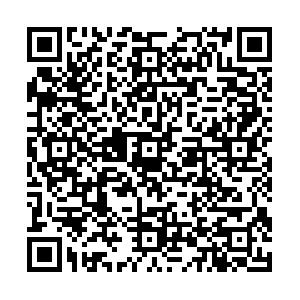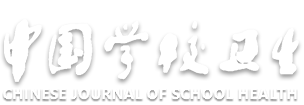Association of plasma irisin concentration with obesity among children: a cohort study
-
摘要:
目的 探究儿童血浆鸢尾素(Irisin)与肥胖相关指标变化值和新发肥胖的纵向关联,以及体力活动(physical activity, PA)和静态行为(sedentary behavior, SB)是否存在调节作用,为儿童肥胖防治工作提供科学依据。 方法 采用整群随机抽样的方法,于2017年在广州市随机抽取5所小学521名儿童进行问卷调查和体格检查,并于2019年随访。根据基线问卷的PA和SB信息筛选符合标准(SB≥同年龄、性别P75或 < 同年龄、性别P25;且中高等强度PA≥60 min/d或 < 150 min/周)的儿童进行血浆Irisin测量。分别采用多重线性回归和Logistic回归进行关联性分析。 结果 儿童2年内肥胖、超重及肥胖、中心性肥胖的累计发病率分别为2.82%,6.57%,6.81%。儿童血浆Irisin与肥胖相关指标变化值、新发超重肥胖或中心性肥胖的关联均无统计学意义(P值均>0.05)。以PA水平分层后,低PA组中Irisin水平与体重变化值呈正相关(B=0.229,P=0.03);以SB水平分层后,低SB组中Irisin水平与身高变化值呈正相关(B=0.210,P < 0.05)。PA和SB均对Irisin与体重变化值有调节作用(PPA调节=0.01,PSB调节=0.05)。 结论 PA和SB对儿童血浆Irisin与体重增加值具有调节作用,未发现Irisin与儿童新发超重或肥胖相关。 Abstract:Objective To explore the longitudinal association of the levels of plasma irisin among children with changes in obesity related parameters and newly-onset obesity, and to explore whether physical activity (PA) and sedentary behavior(SB) have regulatory effects, to provide a scientific basis for the prevention and control of childhood obesity work. Methods Cluster random sampling method was used to select 521 children from five schools in Guangzhou in 2017 at baseline and were followed up in 2019. A based on baseline PA and SB, children who meet the following criterion were selected: moderate-vigorous intensity PA≥60 min/d or < 150 min/week; and gender-, age-specific SB≥P75 or SB < P25. Plasma irisin concentration was measured in all the selected children. Multiple linear regression and Logistic regression were conducted to analyze the association. Results The two-year cumulative incidence of obesity, overweight and obesity, and central obesity was 2.82%, 6.57%, and 6.81%, respectively. There was no statistically significant association between plasma irisin levels and changes in obesity-related parameters, newly-onset overweight obesity or central obesity among children (P>0.05). After stratified by PA, the irisin concentration in the low PA group was positively associated with weight change (B=0.229, P=0.03). After stratified by SB, the irisin concentration in the low SB group was positively associated with the height change (B=0.210, P < 0.05). In addition, PA level and SB level both had a moderating effect on the association between plasma irisin levels and the weight change (PPA=0.01, PSB=0.05). Conclusion PA and SB show moderating effect on plasma irisin concentration and weight gain. No association of irisin concentration with newly-onset overweight or obesity among children has been found. -
Key words:
- Irisin /
- Plasma /
- Obesity /
- Cohort studies /
- Child
-
儿童期肥胖不仅严重影响儿童身心健康,而且会显著增加成年肥胖和糖尿病等慢性病的风险[1-2],提示应该从儿童期开始预防肥胖。尽管肥胖的病因复杂,但核心在于能量平衡失调。因此,从调节能量稳态角度预防肥胖具有重要意义。
鸢尾素(Irisin)是Boström等[3]在2012年发现的一种能够增加能量消耗、调节脂质代谢的肌肉因子,是当前肥胖防治的新靶点[4]。Yin等[5-6]对中国儿童的研究发现,在健康和肥胖儿童中Irisin与体质量指数(BMI)呈负相关,较低的Irisin水平有益于儿童健康。但是Jang等[7]对韩国儿童的研究得到了相反的结果,认为较高Irisin水平是儿童肥胖的独立危险因素。既往研究得到不一致结论的原因可能是研究对象的年龄、性别、地域、饮食、体力活动(physical activity, PA)和静态行为(sedentary behavior, SB)水平等存在差异。其中,PA或SB水平可能是Irisin与肥胖关联的重要调节因素[8-9]。本研究探究儿童血浆Irisin水平与肥胖的关系及PA和SB是否存在调节作用,为儿童肥胖防治提供科学依据。
1. 对象与方法
1.1 对象
采取整群随机抽样的队列研究设计,于2017年3—5月,从广州市11个行政区中抽取3个中心城区和2个周边城区,每个区随机抽取1所小学,共5所小学,调查每所学校的所有学龄儿童,并于2019年进行随访。基于探究PA和SB对Irisin与肥胖关系是否有调节作用的研究目标,本研究根据2017年基线调查的PA和SB信息筛选具有特定体力活动/静态行为模式的儿童进行Irisin测量。首先,在所有学龄儿童中抽取高SB水平(SB≥同年龄、性别P75)和低SB水平(SB<同年龄、性别P25)学龄儿童;其次,在已筛选出的儿童中,分别选取高PA水平(中高强度PA≥60 min/d)和低PA水平(中高强度PA < 150 min/周)学龄儿童[10],共纳入576名学龄儿童。在排除失访和身高负值的异常数据者后,最终521名儿童纳入分析,其中男童271名,女童250名;平均年龄(9.50±1.57)岁。本研究已通过中山大学公共卫生学院伦理审查委员会审批(批号:L2016-010),实施前所有研究对象及其监护人均已签署知情同意书。
1.2 方法
1.2.1 问卷调查
在基线调查中,采用经信效度检验的《广州市小学生体质健康监测系统问卷》[11]收集学生的性别、年龄、PA、SB以及膳食等基本信息。其中,中高等强度体力活动(moderate to vigorous intensity physical activity, MVPA)时间包括过去7 d高强度体力活动时间和中等强度体力活动时间。SB时间包括过去7 d做作业时间、看电视时间和用电脑或玩电子游戏时间,但不包括上课或上下学时间;膳食包括过去7 d中,水果、蔬菜、粗粮、鱼肉、红肉及其制品、含糖饮料、油炸食品、奶制品以及豆制品的摄入情况。
1.2.2 体格检查及判断标准
基线和随访中均进行体格检查,要求研究对象空腹,身高采用便携式身高计测量,测量时要求受检者脱去鞋帽,读数精确至0.1 cm;体重采用杠杆式体重秤测量,测量时要求受检者穿着薄衣裤,读数精确至0.1 kg;腰围采用带尺测量,测量时要求受检者平缓呼吸,带尺刻度下缘于肚脐上缘1 cm处,水平环绕一周,读数精确至0.1 cm。测量完成后计算BMI=体重(kg)/[身高(m)]2;腰高比(waist-height ratio, WHtR)=腰围(cm)/身高(cm)[12];身高、体重等变化值为随访值与基线值的差值。
参照《学龄儿童青少年超重与肥胖筛查》(WS/T 586—2018)[13]判定超重肥胖。参照《7~18岁儿童青少年高腰围筛查界值》(WS/T 611—2018)[14]将腰围≥同年龄同性别儿童腰围P90判定为中心性肥胖。
1.2.3 血浆Irisin水平测定
在基线调查采集血液,要求研究对象禁食禁水10 h以上,抽取清晨空腹肘部静脉血5 mL,采用4 ℃保温盒运回实验室后立刻以3 000 rpm/min离心15 min,离心半径10 cm,分离血清、血浆,分装后置于-80 ℃冰箱中保存。采用酶联免疫吸附法测定血浆Irisin质量体积浓度。试剂盒来自美国Phoenix Pharmaceuticals公司,型号为EK-067-29。
1.3 统计分析
采用SAS 9.4进行数据处理。连续性变量用(x±s)或[M(P25, P75)]进行表示,分类变量用百分比或百分率表示。根据血浆Irisin质量体积浓度对研究对象进行二等分,分为低、高水平组。采用t检验或秩和检验以及χ2检验比较组间差异。采用多重线性回归分析Irisin质量体积浓度与肥胖指标变化值的关联,并分别进行PA和SB的分层分析,同时使用Process程序探究PA和SB对上述关联的调节作用。以是否肥胖、超重肥胖或中心性肥胖(1=是,0=否)为因变量,Irisin质量体积浓度、性别(1=男,0=女)、年龄、父母文化程度(1=初中及以下,2=高中或中专,3=大专及以上)、家庭人均月收入(1= < 5 000元,2=5 000~12 000元,3=>12 000元、4=不清楚)、家族肥胖史(1=是,0=否)、饮食、体力活动时间、静态行为时间为自变量,进行二元Logistic回归分析。分析Irisin质量体积浓度与新发超重肥胖和中心性肥胖的关联,并分别进行PA和SB的分层分析,同时探究PA和SB对上述关联的调节作用。检验水准α=0.05。
2. 结果
2.1 基本情况
见表 1。
表 1 Irisin高低水平组研究对象基线调查指标比较(x±s)Table 1. Comparison of baseline survey indicators between high and low irisin levels(x±s)组别 人数 年龄/岁 Irisin/(ng·mL-1) 身高/cm 体重/kg BMI/(kg·m-2) 腰围/cm WHtR MVPA/(min·d-1) SB/(min·d-1) 低水平组 260 9.29±1.56 7.51±0.88 138.10±12.52 33.46±10.95 17.16±3.22 59.82±9.64 0.43±0.06 65.61±64.43 174.60±112.10 高水平组 261 9.70±1.55 11.2±2.21 139.90±11.27 33.86±10.20 16.95±2.94 59.17±8.52 0.42±0.05 75.48±68.93 176.50±107.00 合计 521 9.50±1.57 9.36±2.50 139.00±11.93 33.66±10.57 17.05±3.08 59.49±9.09 0.43±0.05 70.55±66.84 175.54±109.49 t值 -3.03 -25.01 -1.80 -0.43 0.76 0.81 1.87 -1.69 -0.19 P值 0.00 < 0.01 0.07 0.67 0.45 0.42 0.06 0.09 0.85 研究对象平均血浆Irisin质量体积浓度为(9.36±2.50)ng/mL,MVPA时间为(70.55±66.84)min/d,SB总时间为(175.54±109.49)min/d。如表 1所示,根据研究对象血浆Irisin质量体积浓度二等分进行分组后发现,年龄的组间差异有统计学意义(P < 0.05)。
2.2 儿童血浆Irisin质量体积浓度与肥胖相关指标变化值的关联性
多重线性回归分析结果如表 2所示,未发现儿童血浆Irisin水平与肥胖相关指标变化值有统计学意义(P值均>0.05)。分层分析结果如表 3所示,低PA组中,Irisin与体重变化值呈正相关(B=0.229,95%CI=0.024~0.435, P=0.03);低SB组中,Irisin与身高变化值呈正相关(B=0.210,95%CI=0.001~0.420,P < 0.05)。在其他PA或SB组中,未发现Irisin与肥胖相关指标变化值有统计学意义(P值均>0.05)。调节效应检验结果显示,PA对Irisin与体重变化值的关联有调节作用(PPA调节=0.01);SB对Irisin与体重变化值的关联有调节作用(PSB调节=0.05)。未发现PA或SB对Irisin与其他肥胖相关指标变化值关联的调节作用有统计学意义(P值均>0.05)。
表 2 儿童血浆Irisin水平与肥胖相关指标变化值的关联性(n=521)Table 2. Relationship of plasma irisin concentrations among children with changes in obesity parameters(n=521)肥胖指标 变化值 模型1 模型2 B值(B值95%CI) P值 B值(B值95%CI) P值 身高/cm 12.115±3.701 0.086(-0.042~0.214) 0.19 0.109(-0.029~0.247) 0.12 体重/kg 9.260±4.212 0.037(-0.111~0.186) 0.62 0.076(-0.087~0.240) 0.36 BMI/(kg·m-2) 1.450±1.410 0.006(-0.043~0.055) 0.81 0.011(-0.043~0.066) 0.68 腰围/cm 5.680±4.371 0.070(-0.159~0.298) 0.55 0.078(-0.172~0.329) 0.54 WHtR 0.000±0.035 0.001(-0.001~0.003) 0.30 0.001(-0.001~0.003) 0.38 注:模型1调整基线性别、年龄,模型2调整基线性别、年龄、父母文化程度、家庭人均月收入、家族肥胖史、饮食、体力活动时间、静态行为时间。 表 3 不同PA和SB水平下儿童血浆Irisin水平与肥胖相关指标变化值的分层分析[B值(B值95%CI),n=521]Table 3. Stratified analysis of the relationship of plasma irisin concentrations among children with changes in obesity parameters under different PA or SB status[B(B 95%CI), n=521]变量 水平 身高 体重 BMI 腰围 WHtR PA 低 0.163(-0.030~ 0.356) 0.229(0.024~ 0.435)* 0.046(-0.022~ 0.113) 0.099(-0.212~ 0.409) 0.001(-0.001~ 0.003) 高 0.012(-0.205~ 0.229) -0.221(-0.512~ 0.069) -0.054(-0.153~ 0.044) 0.127(-0.375~ 0.630) 0.002(-0.003~ 0.007) SB 低 0.210(0.001~ 0.420)* 0.170(-0.065~ 0.406) 0.009(-0.066~ 0.085) 0.007(-0.286~ 0.301) 0.001(-0.002~ 0.004) 高 -0.006(-0.200~ 0.187) -0.011(-0.246~ 0.223) 0.029(-0.051~ 0.108) 0.220(-0.224~ 0.664) 0.002(-0.001~ 0.005) 注:模型调整基线性别、年龄、父母文化程度、家庭人均月收入、家族肥胖史、饮食、体力活动时间、静态行为时间;*P < 0.05。 2.3 儿童血浆Irisin水平与新发肥胖和中心性肥胖的关联性
研究对象2017年基线的肥胖、超重肥胖、中心性肥胖的检出率分别为11.32%(59/521),23.80%(124/521),16.89%(87/515)。分别将上述基线检出者排除后,随访2年的累计发病率分别为2.82%(13/461),6.57%(26/396),6.81%(13/191)。Logistic回归分析结果显示,未发现儿童血浆Irisin水平与新发超重肥胖和中心性肥胖的关联有统计学意义(P值均>0.05)。根据PA或SB分层分析,未发现儿童血浆Irisin水平与新发超重肥胖和中心性肥胖的关联有统计学意义(P值均>0.05),也未发现PA或SB水平对儿童血浆Irisin水平与新发超重肥胖和中心性肥胖的调节作用有统计学意义(P值均>0.05)。见表 4。
表 4 儿童血浆Irisin水平与新发超重肥胖和中心性肥胖的关联性Table 4. Relationship of circulating Irisin concentrations among children with new-onset obesity or central obesity因变量 人数 模型1 模型2 OR值(OR值95%CI) P值 OR值(OR值95%CI) P值 肥胖 461 0.83(0.61~1.12) 0.23 0.78(0.52~1.16) 0.21 超重肥胖 396 0.96(0.81~1.14) 0.65 0.97(0.78~1.20) 0.76 中心性肥胖 191 0.89(0.67~1.20) 0.45 0.69(0.38~1.27) 0.23 注: 模型1调整性别、年龄,模型2调整基线性别、年龄、父母文化程度、家庭人均月收入、家族肥胖史、饮食、体力活动时间、静态行为时间。 3. 讨论
本研究发现,研究对象2年内肥胖、超重及肥胖、中心性肥胖累计发病率分别为2.82%,6.57%,6.81%,略高于黄婕等[15]在广州的调查,提示广州儿童超重肥胖问题依旧严峻。本研究未发现儿童血浆Irisin水平与肥胖相关指标变化值以及新发超重肥胖或中心性肥胖的关联有统计学意义。但低PA组Irisin水平与体重变化值呈正相关,低SB组Irisin水平与身高变化值呈正相关。而且,PA和SB水平均对儿童血浆Irisin水平和体重变化值的关联均具有调节作用。
关于儿童Irisin水平与肥胖的关系,现今的研究尚未有一致的结论。Yin等[5-6]针对中国儿童的横断面研究发现,Irisin水平与BMI和腰围呈负相关。与此类似,Liu等[16]针对中国老年人的队列研究也发现,较高的基线Irisin水平能够降低BMI增加的风险。动物实验也证实了Irisin对肥胖小鼠体重减轻的促进作用[17]。因此,身体内较高的Irisin水平可能会通过促进能量消耗来减少体重增加,预防肥胖发生。与此相反,Jang等[7]和Elizondo-Montemayor等[18]分别以韩国和墨西哥儿童青少年为研究对象,发现Irisin水平与BMI和腰围均呈正相关,肥胖儿童的Irisin水平更高。出现该现象可能因为Irisin也是一种脂肪因子[19],肥胖儿童体内脂肪含量较高,一定程度上导致Irisin分泌增多,同时肥胖儿童可能会代偿性分泌Irisin,增加能量消耗,维持能量存储和消耗的平衡,以减缓肥胖进程。此外,与本研究结果相似,Reinehr等[20]对德国肥胖儿童干预研究发现,BMI的变化值与Irisin无关。Sanchis-Gomar等[21]在肥胖成人中的研究也发现,Irisin与BMI或WHtR无关。各研究设计类型、研究对象年龄性别、代谢状态、体力活动状态等均存在很大的异质性可能是造成结论不一致的重要原因。
高PA水平可促进身体分泌多种肌肉因子[22],可能导致Irisin与其他肌肉因子相互作用而影响Irisin与肥胖的关系。Cai等[6]研究发现,低PA组Irisin与BMI呈负相关,而在高PA组中无显著关联;高SB组Irisin与BMI呈负相关,而在低SB组中无显著关联。Karampatsou等[23]对超重肥胖儿童进行运动干预后也发现,Irisin变化与WHtR变化呈负相关。出现高低PA或SB组中Irisin与肥胖关系不同,可能是因为高PA状态下身体分泌多种肌肉因子与Irisin相互作用掩盖了与肥胖之间的联系。与此相反,Moreno等[24]在西班牙成人中发现,仅在低PA水平组中Irisin与体重及BMI呈正相关,与本研究结果类似。原因可能是因为各研究对PA或SB水平的评估方法、研究对象的BMI分布等导致Irisin对肥胖的保护效果。
综上所述,我国儿童超重肥胖的现况依旧严峻,本研究虽未发现儿童血浆Irisin水平与肥胖之间存在关联,但发现PA和SB对Irisin水平和体重变化值的关系具有调节作用。Irisin作为潜在的肥胖防治新靶点,对儿童肥胖的作用仍需要更多高质量的研究证据来予以论证,且需要探究不同PA或SB水平下Irisin对儿童肥胖的作用,以推动从儿童期开始防治成年期肥胖和其他慢性疾病。
-
表 1 Irisin高低水平组研究对象基线调查指标比较(x±s)
Table 1. Comparison of baseline survey indicators between high and low irisin levels(x±s)
组别 人数 年龄/岁 Irisin/(ng·mL-1) 身高/cm 体重/kg BMI/(kg·m-2) 腰围/cm WHtR MVPA/(min·d-1) SB/(min·d-1) 低水平组 260 9.29±1.56 7.51±0.88 138.10±12.52 33.46±10.95 17.16±3.22 59.82±9.64 0.43±0.06 65.61±64.43 174.60±112.10 高水平组 261 9.70±1.55 11.2±2.21 139.90±11.27 33.86±10.20 16.95±2.94 59.17±8.52 0.42±0.05 75.48±68.93 176.50±107.00 合计 521 9.50±1.57 9.36±2.50 139.00±11.93 33.66±10.57 17.05±3.08 59.49±9.09 0.43±0.05 70.55±66.84 175.54±109.49 t值 -3.03 -25.01 -1.80 -0.43 0.76 0.81 1.87 -1.69 -0.19 P值 0.00 < 0.01 0.07 0.67 0.45 0.42 0.06 0.09 0.85 表 2 儿童血浆Irisin水平与肥胖相关指标变化值的关联性(n=521)
Table 2. Relationship of plasma irisin concentrations among children with changes in obesity parameters(n=521)
肥胖指标 变化值 模型1 模型2 B值(B值95%CI) P值 B值(B值95%CI) P值 身高/cm 12.115±3.701 0.086(-0.042~0.214) 0.19 0.109(-0.029~0.247) 0.12 体重/kg 9.260±4.212 0.037(-0.111~0.186) 0.62 0.076(-0.087~0.240) 0.36 BMI/(kg·m-2) 1.450±1.410 0.006(-0.043~0.055) 0.81 0.011(-0.043~0.066) 0.68 腰围/cm 5.680±4.371 0.070(-0.159~0.298) 0.55 0.078(-0.172~0.329) 0.54 WHtR 0.000±0.035 0.001(-0.001~0.003) 0.30 0.001(-0.001~0.003) 0.38 注:模型1调整基线性别、年龄,模型2调整基线性别、年龄、父母文化程度、家庭人均月收入、家族肥胖史、饮食、体力活动时间、静态行为时间。 表 3 不同PA和SB水平下儿童血浆Irisin水平与肥胖相关指标变化值的分层分析[B值(B值95%CI),n=521]
Table 3. Stratified analysis of the relationship of plasma irisin concentrations among children with changes in obesity parameters under different PA or SB status[B(B 95%CI), n=521]
变量 水平 身高 体重 BMI 腰围 WHtR PA 低 0.163(-0.030~ 0.356) 0.229(0.024~ 0.435)* 0.046(-0.022~ 0.113) 0.099(-0.212~ 0.409) 0.001(-0.001~ 0.003) 高 0.012(-0.205~ 0.229) -0.221(-0.512~ 0.069) -0.054(-0.153~ 0.044) 0.127(-0.375~ 0.630) 0.002(-0.003~ 0.007) SB 低 0.210(0.001~ 0.420)* 0.170(-0.065~ 0.406) 0.009(-0.066~ 0.085) 0.007(-0.286~ 0.301) 0.001(-0.002~ 0.004) 高 -0.006(-0.200~ 0.187) -0.011(-0.246~ 0.223) 0.029(-0.051~ 0.108) 0.220(-0.224~ 0.664) 0.002(-0.001~ 0.005) 注:模型调整基线性别、年龄、父母文化程度、家庭人均月收入、家族肥胖史、饮食、体力活动时间、静态行为时间;*P < 0.05。 表 4 儿童血浆Irisin水平与新发超重肥胖和中心性肥胖的关联性
Table 4. Relationship of circulating Irisin concentrations among children with new-onset obesity or central obesity
因变量 人数 模型1 模型2 OR值(OR值95%CI) P值 OR值(OR值95%CI) P值 肥胖 461 0.83(0.61~1.12) 0.23 0.78(0.52~1.16) 0.21 超重肥胖 396 0.96(0.81~1.14) 0.65 0.97(0.78~1.20) 0.76 中心性肥胖 191 0.89(0.67~1.20) 0.45 0.69(0.38~1.27) 0.23 注: 模型1调整性别、年龄,模型2调整基线性别、年龄、父母文化程度、家庭人均月收入、家族肥胖史、饮食、体力活动时间、静态行为时间。 -
[1] 国家卫生健康委员会. 中国居民营养与慢性病状况报告(2020年)[J]. 营养学报, 2020, 42(6): 521. https://www.cnki.com.cn/Article/CJFDTOTAL-ZGWY202012001.htmNational Health Commission of the People's Republic of China. The report of Chinese nutrition and chronic disease status(2020)[J]. Acta Nutr Sinica, 2020, 42(6): 521. https://www.cnki.com.cn/Article/CJFDTOTAL-ZGWY202012001.htm [2] RAITAKARI O T, JUONALA M, KÄHÖNEN M, et al. Cardiovascular risk factors in childhood and carotid artery intima-media thickness in adulthood[J]. JAMA, 2003, 290(17): 2277. doi: 10.1001/jama.290.17.2277 [3] BOSTRÖM P, WU J, JEDRYCHOWSKI M P, et al. A PGC1-α-dependent myokine that drives brown-fat-like development of white fat and thermogenesis[J]. Nature, 2012, 481(7382): 463-468. doi: 10.1038/nature10777 [4] ARHIRE L I, MIHALACHE L, COVASA M. Irisin: a hope in understanding and managing obesity and metabolic syndrome[J]. Front Endocrinol (Lausanne), 2019, 10: 524. doi: 10.3389/fendo.2019.00524 [5] YIN C, HU W, WANG M, et al. Irisin as a mediator between obesity and vascular inflammation in Chinese children and adolescents[J]. Nutr Metab Cardiovasc Dis, 2020, 30(2): 320-329. doi: 10.1016/j.numecd.2019.09.025 [6] CAI L, TAN M, TAN W, et al. Associations of circulating irisin concentrations with cardiometabolic risk factors among children vary by physical activity or sedentary time levels[J]. Front Endocrinol, 2019, 10: 549. doi: 10.3389/fendo.2019.00549 [7] JANG H B, KIM H, KANG J H, et al. Association of circulating irisin levels with metabolic and metabolite profiles of Korean adolescents[J]. Metabolism, 2017, 73: 100-108. doi: 10.1016/j.metabol.2017.05.007 [8] ELIZONDO-MONTEMAYOR L, MENDOZA-LARA G, GUTIERREZ-DELBOSQUE G, et al. Relationship of circulating Irisin with body composition, physical activity, and cardiovascular and metabolic disorders in the pediatric population[J]. Int J Mol Sci, 2018, 19(12): 3727. doi: 10.3390/ijms19123727 [9] 唐努, 陈亚军, 谈敏怡, 等. 儿童体力活动状况与鸢尾素及心血管代谢危险因素的关系[J]. 中国学校卫生, 2019, 40(12): 1912-1915. doi: 10.16835/j.cnki.1000-9817.2019.12.043TANG N, CHEN Y J, TAN M Y, et al. Associations of circulating irisin concentrations and physical activity status and with cardiometabolic risk factors among children[J]. Chin J Sch Health, 2019, 40(12): 1912-1915. doi: 10.16835/j.cnki.1000-9817.2019.12.043 [10] CHAPUT J P, WILLUMSEN J, BULL F, et al. 2020 WHO guidelines on physical activity and sedentary behaviour for children and adolescents aged 5-17-years: summary of the evidence[J]. Int J Behav Nutr Phys Act, 2020, 17(1): 141. doi: 10.1186/s12966-020-01037-z [11] 吕雅杰, 赖丽娟, 李丹玲, 等. 广州市小学生体质健康监测系统问卷的信效度研究[J]. 中国妇幼保健, 2020, 35(8): 1511-1516. https://www.cnki.com.cn/Article/CJFDTOTAL-ZFYB202008049.htmLYU Y J, LAI L J, LI D L, et al. Study on the reliability and validity of physical health surveillance system questionnaire for primary school students in Guangzhou[J]. Matern Child Health Care Chin, 2020, 35(8): 1511-1516. https://www.cnki.com.cn/Article/CJFDTOTAL-ZFYB202008049.htm [12] 齐秀玉, 陶芳标, 万宇辉, 等. 青少年腰高比与代谢综合征的相关性研究[J]. 中国学校卫生, 2009, 30(4): 298-300, 303. https://www.cnki.com.cn/Article/CJFDTOTAL-XIWS200904009.htmQI X Y, TAO F B, WAN Y H, et al. Relationship of waist to height ratio and metabolic syndrome in adolescents[J]. Chin J Sch Health, 2009, 30(4): 298-300, 303. https://www.cnki.com.cn/Article/CJFDTOTAL-XIWS200904009.htm [13] 国家卫生健康委员会. 学龄儿童青少年超重与肥胖筛查WS/T 586—2018[S]. 2018-08-01.National Health Commission of the People's Republic of China. Screening for overweight and obesity among school-age children and adolescents WS/T 586-2018[S]. 2018-08-01. [14] 国家卫生健康委员会. 7~18岁儿童青少年高腰围筛查界值WS/T 611—2018[S]. 2018-12-01.National Health Commission of the People's Republic of China. High waist circumference screening threshold among children and adolescents aged 7-18 years WS/T 611-2018[S]. 2018-12-01. [15] 黄婕, 张齐光, 张维蔚, 等. 广州市郊区中小学生营养状况及相关饮食行为分析[J]. 环境与职业医学, 2020, 37(8): 782-786. https://www.cnki.com.cn/Article/CJFDTOTAL-LDYX202008010.htmHUANG J, ZHANG Q G, ZHANG W W, et al. Nutritional status and related dietary behaviors among school-age children in a suburb of Guangzhou[J]. J Environ Occup Med, 2020, 37(8): 782-786. https://www.cnki.com.cn/Article/CJFDTOTAL-LDYX202008010.htm [16] LIU R, SHI L, PENG N, et al. Higher baseline serum Irisin decreases risk for body mass index increment in chinese populations: a 3.2-year cohort study[J]. Diabet Ther, 2019, 10(2): 713-723. doi: 10.1007/s13300-019-0588-4 [17] ZHANG Y, LI R, MENG Y, et al. Irisin stimulates browning of white adipocytes through mitogen-activated protein kinase p38 MAP kinase and ERK MAP kinase signaling[J]. Diabetes, 2014, 63(2): 514-525. doi: 10.2337/db13-1106 [18] ELIZONDO-MONTEMAYOR L, SILVA-PLATAS C, TORRES-QUINTANILLA A, et al. Association of irisin plasma levels with anthropometric parameters in children with underweight, normal weight, overweight, and obesity[J]. Biolmed Res Int, 2017, 2017: 2628968. DOI: 10.1155/2017/2628968. [19] ROCA-RIVADA A, CASTELAO C, SENIN L L, et al. FNDC5/irisin is not only a myokine but also an adipokine[J]. PLoS One, 2013, 8(4): e60563. doi: 10.1371/journal.pone.0060563 [20] REINEHR T, ELFERS C, LASS N, et al. Irisin and its relation to insulin resistance and puberty in obese children: a longitudinal analysis[J]. J Clin Endocrinol Metab, 2015, 100(5): 2123-2130. doi: 10.1210/jc.2015-1208 [21] SANCHIS-GOMAR F, ALIS R, PAREJA-GALEANO H, et al. Circulating irisin levels are not correlated with BMI, age, and other biological parameters in obese and diabetic patients[J]. Endocrine, 2014, 46(3): 674-677. doi: 10.1007/s12020-014-0170-9 [22] PEDERSEN B K, FEBBRAIO M A. Muscles, exercise and obesity: skeletal muscle as a secretory organ[J]. Nat Rev Endocrinol, 2012, 8(8): 457-465. doi: 10.1038/nrendo.2012.49 [23] KARAMPATSOU S I, GENITSARIDI S M, MICHOS A, et al. The Effect of a Life-Style intervention program of diet and exercise on irisin and FGF-21 concentrations in children and adolescents with overweight and obesity[J]. Nutrients, 2021, 13(4): 1274. doi: 10.3390/nu13041274 [24] MORENO M, MORENO-NAVARRETE J M, SERRANO M, et al. Circulating irisin levels are positively associated with metabolic risk factors in sedentary subjects[J]. PLoS One, 2015, 10(4): e124100. doi: 10.1371/journal.pone.0124100.pdf -

 点击查看大图
点击查看大图
计量
- 文章访问数: 755
- HTML全文浏览量: 301
- PDF下载量: 39
- 被引次数: 0






 下载:
下载:
 下载:
下载: